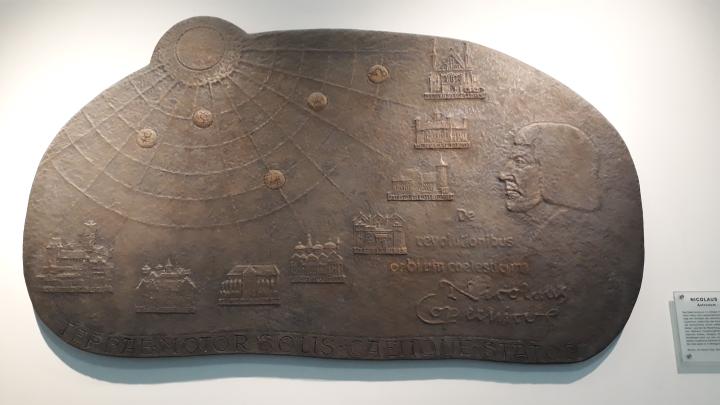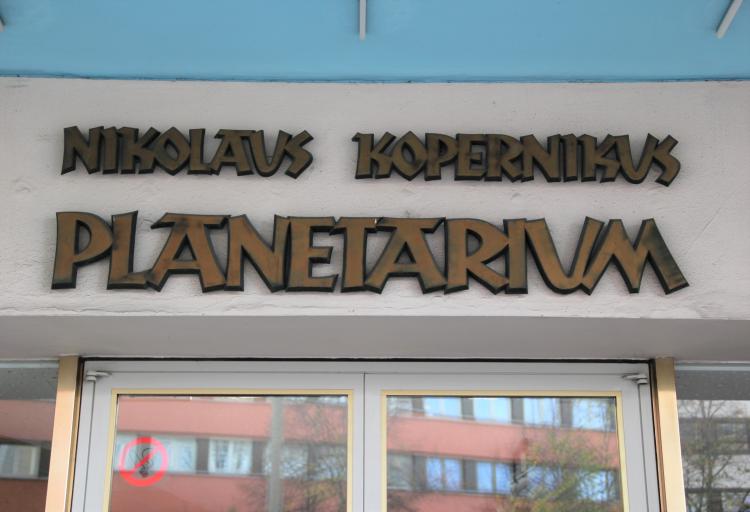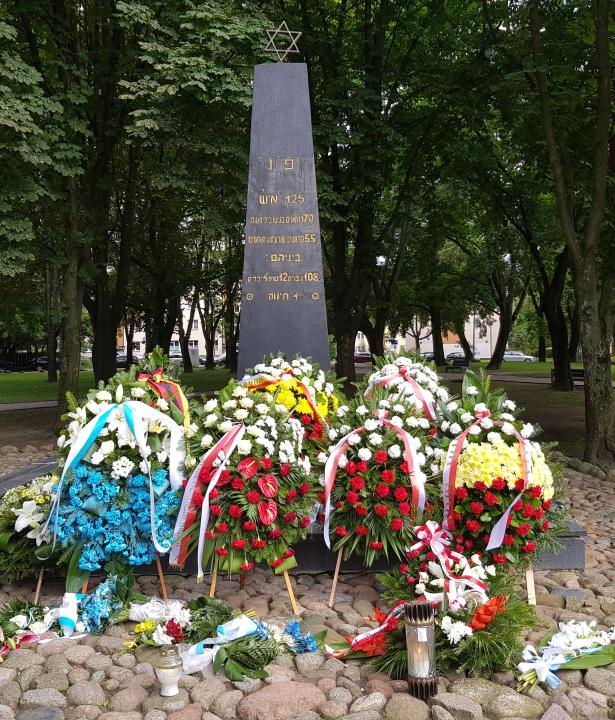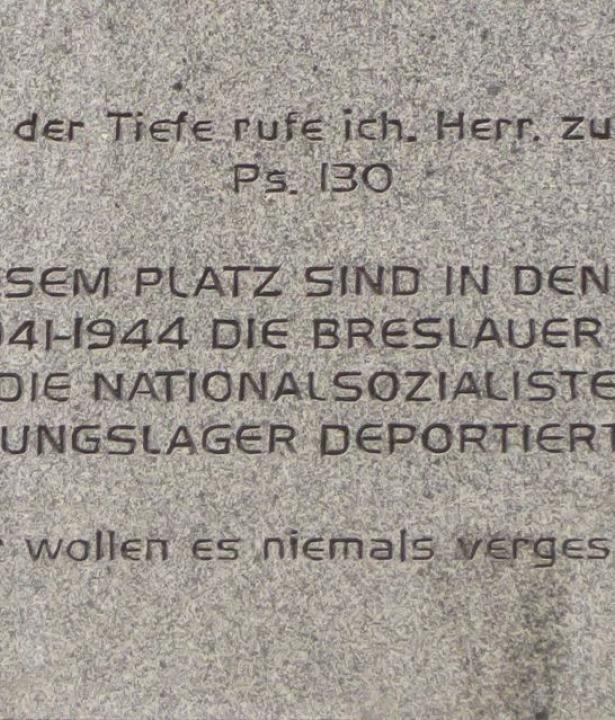In West Germany, the Copernicus anniversary was coordinated and organized centrally. A lot of effort was put in to ensure that the celebrations would have a wide-reaching impact. Organizations representing those displaced from East and West Prussia played a special role in the celebrations.
Text
An extensive program of events was organized to mark the Copernicus anniversary year of 1973 in West Germany. The events were put on by a number of different stakeholders. The military precision of the preparations in the run-up to the event is particularly striking. Several committees were set up to oversee the management of the various activities centrally.1 First, an anniversary association was founded in 1968. This was then joined by a working committee and a board of trustees, which included representatives from the worlds of science, religion, and commerce. This conflict of interests then necessitated the founding of an additional organization to help coordinate everything: In 1971, a “German Copernicus Committee” was set up. This committee had its own executive board and circle of members.
Text
The city of Nuremberg was chosen as the location for the main ceremony held on February 19, 1973 – the 500th anniversary of Copernicus’ birth. Copernicus never stayed in Nuremberg, but the first edition of his main work, De Revolutionibus, was published in Nuremberg in 1543. An auditorium belonging to the energy and water supplier EWAG was available for use for the event. It was situated close to Nuremberg station and had been hosting planetarium tours for school groups since 1961. The city of Nuremberg used the ceremony as an opportunity to rename the building the “Nicolaus Copernicus Planetarium Nuremberg.” As such, Nuremberg was able to further position itself as a Copernicus city. Meanwhile, the planetarium itself was presented as the successor to the first planetarium in Nuremberg, which had been built during the Weimar Republic and destroyed by the Nazi Gauleiter (regional commander) Julius Streicher in 1934.2 The debut performance of the Al Rovescio piece for flute, harp, piano, and metal percussion instruments by Detmold-based composer Giselher Klebe also added a modern touch to the ceremony.
Text
Copernicus ’73 – Welt des Menschen (Copernicus ’73 – World of Humankind) was shown in the Norishalle – a building that had opened its doors in 1969 and, in architectural terms, was considered the most modern exhibition hall in Nuremberg. Created by Munich astronomy professor Felix Schmeidler, it was one of the main projects organized by the Copernicus Committee. In nearby Munich, a Copernicus research center was established in 1973 with long-term funding from the German Research Foundation (DFG). Science historian Heribert Nobis took over its management. The research center’s remit was to develop a new complete edition of Nicolaus Copernicus’ writings. This work was completed in 2019. In order to mark the anniversary year of 1973, the research center also put together a standalone exhibition in collaboration with the German Museum. It was entitled Nicolaus Copernicus – Wandel des Weltbildes (Nicolaus Copernicus – Transformation of the Worldview).
Text
Despite the centralized nature of the organization of the Copernicus anniversary celebrations in West Germany, there was no fixed theme running through the commemorative events, unlike the celebrations that took place in East Germany and the Republic of Poland. Instead, different focal points and narratives competed with each other as part of the wide-ranging program of events. On the one hand, the historical “achievements” of Copernicus were praised as an example of modern technological advancements, and presented as a motivation to close the “gaps in technological education” that had been identified as existing within West Germany. As such, it was a natural step to link Copernican teachings with space travel; especially as it was just four years since American astronauts Neil Armstrong and Edwin Aldrin had been eagerly watched by people all over the globe as they became the first people to walk on the Moon. The Nuremberg Copernicus exhibition, for example, incorporated the topic of “Astronomy and Space Travel”, displaying “parts of a rocket returned from space”3 and other exhibits relating to space. The front cover of a publication4 marking the anniversary, which was published at Münster University in conjunction with the Copernicus Committee, is another example of this: it showed a photograph of the large moon crater named after Copernicus, rather than a portrait of Nicolaus Copernicus himself.


Cover of the commemorative publication, which was published in 1973 and commissioned by the Association for the Preparation of the Copernicus Anniversary. CC BY-SA 4.0
Cover of the commemorative publication, which was published in 1973 and commissioned by the Association for the Preparation of the Copernicus Anniversary. CC BY-SA 4.0
Text
On the other hand, the question of Copernicus’ nationality continued to be of relevance. The editors of the commemorative publication expressly distanced themselves “from publications from the past and present, which, disregarding the boundary between information and propaganda, use Copernicus research to service nationalism and Weltanschauung.”5 They interpreted this discourse as a burdensome “inheritance”,6 as it is overlaid “by the bitter arguments between Germans and Poles about Copernicus’ allegiance to their nation.”7 Elsewhere, however, it had been decided to stay silent altogether on the problematic issue: “The German Committee and preparatory society had decided, as discussed with the Foreign Office on June 2, 1972, that all of the celebrations were to take place without an emphasis being placed on [Copernicus’] national identity.”8
Text
The regional associations for people from East and West Prussia played a special role within this context. They were represented in all of the committees set up for the West German Copernicus anniversary and also stepped forward with many of their own campaigns. Their areas of reference, which became part of the Polish state following the end of the Second World War, were home to the historical region of Varmia, which encompassed almost all of the locations where Copernicus spent his life. As such, thoughts of Copernicus were akin to references to a “lost homeland” for the regional associations and, as such, were of existential significance.


Organizations representing people who had been expelled from East and West Prussia strongly identified with Copernicus: Letter seal for the West Prussian Association. Westpreußische Gesellschaft, CC BY-SA 4.0
Organizations representing people who had been expelled from East and West Prussia strongly identified with Copernicus: Letter seal for the West Prussian Association. Westpreußische Gesellschaft, CC BY-SA 4.0
Text
The Coppernicus Association in Münster had close connections to the West Prussian Association. Plans for the 500th anniversary of their namesake’s birth were discussed within the association as early as 1964. One topic under discussion was the building of a memorial, but this idea was soon rejected. In the West Prussian Annual for 1973, Felician Prill, federal spokesperson for the West Prussian Association, described Copernicus in politically neutral terms as the “greatest son of the Vistula Land”,9 but emphasized his belonging to the “long history of West Prussia.”10 In an article from the same publication about the restoration of the Copernicus House in the Polish town of Toruń by Karl Hauke, it is noticeable that the work was described in a positive light (“with great care”, “a realistic overall impression”11 ), but the highly qualified Polish monument preservation organization behind the restoration was not named. Instead, the end of the article includes the sentence: “The Copernicus House in Thorn should serve as a living memorial of the great astronomer and his background for us Germans.”12
Text
Furthermore, the West Prussian Association issued a gold and silver Copernicus medal and put together a touring photography exhibition. Sculptor Georg Fuhg – from the East Prussian town of Pieniężno (formerly Melzak), where Copernicus had served as the administrator of the Varmian cathedral chapter – was commissioned by the association to create a two-meter-wide bronze relief. It was given to the Westphalian-Lippe regional authority on permanent loan and displayed at the “entrance to the West Prussian Room of the Landeshaus in Münster.”13 The peculiar representation shows the Sun orbited by five planets. The planetary orbits are intersected by rays of sunshine, which run into representations of the former East and West Prussian Copernicus towns.


Bronze relief of the Copernican worldview by Georg Fuhg in the Landeshaus in Münster, commissioned by the West Prussian Association. Westpreußische Gesellschaft / West Prussian Association, CC BY-SA 4.0
Bronze relief of the Copernican worldview by Georg Fuhg in the Landeshaus in Münster, commissioned by the West Prussian Association. Westpreußische Gesellschaft / West Prussian Association, CC BY-SA 4.0
Text
Looking back, Helmut Naunin wrote that “it was not possible to even estimate the number of hours of commemoration and celebratory events in West Germany. [...] The regional associations and their local groups encouraged or stepped up themselves as public event organizers.”14 The author emphasizes the point that “in no locations were the participants limited to the organizations and associations representing people from East and West Prussia.”15 Instead, “the enthusiasm and participation was often due to an interest in space travel.”16 Within this context, it is revealing to note that the chairmanship of the jubilee board of trustees had been offered to Wernher von Braun, possibly also at the instigation of the associations: As a space rocket designer at NASA, he would have been an ideal embodiment of this modern theme. Von Braun was also the son of an East Prussian landowner.17
Text
In the anniversary year, however, a more differentiated view was already gaining ground among the broader public in West Germany, supported by new scientific findings, especially in Poland, and conveyed by the mass media: The newspaper DIE ZEIT now characterized Copernicus as “the Polish King’s Prussian servant”,18 while an article in the SPIEGEL declared the end of the “dispute among scholars”19 about his nationality: “Poles and Germans alike see the astronomer as a good citizen of the Polish state.”20
Text
English translation: LEaF Translations






